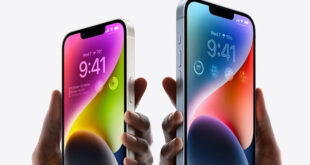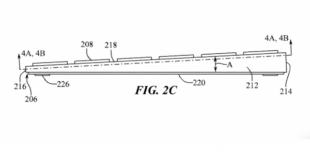
For the last few years, Samsung has been racking up display technology wins virtually every refresh cycle. Apple’s decision to pursue LCDs up to and including the iPhone 8 meant that the two companies operated in rather different universes. Four to five years ago, Apple’s LCDs had a significant efficiency advantage. OLEDs have steadily closed the gap, however, which partly explains why we’re seeing Apple shift to them after so many years. Now, DisplayMate has published its first comparison of the iPhone X’s OLED panel, and this year, it’s taking home the bacon.
Although Dr. Soneira doesn’t do this comparison himself, we’ve lined up his Galaxy Note 8 OLED comparison against the iPhone X to see where each phone excelled. Samsung’s Note 8 has a higher PPI and sub-pixel resolution (458 PPI for Apple, 521 PPI for Samsung), though we’ve noted that pushing pixel density has already hit the point of diminishing-to-negligible marginal return for human eyeballs. In terms of color accuracy, the Samsung Galaxy Note 8 is very good, but Apple is nearly perfect, with an even cleaner match with Rec. 709 and DCI-P3.
The iPhone X’s color accuracy. Image by DisplayMate.
The difference here, according to Dr. Soneira, is “Very Good” accuracy for Samsung vs. “Excellent” for Apple.
Average screen reflection is 4.5 percent Apple, 4.6 percent Samsung, and both displays reflect the same percentage of mirror reflections, 5.7 percent. Average, full, and peak brightness are all brighter on the iPhone X, though Automatic Brightness can surge to a higher point on the Samsung Galaxy Note 8. The iPhone X gets a slightly higher rating for contrast rating in high ambient light (A+ for iPhone X vs. A for Galaxy Note 8), but the Note 8 also scores an A+ if automatic brightness is enabled.
Apple’s overall color accuracy is decisively better than Samsung’s, but keep in mind that this means less than it used to, which is to say: As color reproduction quality continues to improve, the gap between “Very Good” and “Excellent” is more difficult to perceive than the gap between “Average” and “Very good.”
Apple’s iPhone X also loses less brightness when viewed from a 30-degree angle (22 percent versus 29 percent) but the color shifts are smaller on the Note 8.
Power consumption comparisons are always interesting, especially since this is the first time we’ve seen Apple and Samsung go head-to-head with an OLED panel. Unfortunately, the data presented for the iPhone X isn’t particularly easy to compare with the Galaxy Note 8.
Dr. Soneira reports that the Note 8’s Average Display Power (maximum brightness at 50 percent average picture level) is 1.2W with 525 cd/m2. That’s candela per square meter, a measure of luminance. The total screen area is 12.8-inch2 for the iPhone X and 15.7-inch2 for the Galaxy Note 8. Obviously the iPhone X draws more power than the Samsung Galaxy Note 8, but it’s also emitting much more light at the same percentage brightness.
We’ve reached out to Dr. Soneira for clarification on this point; we’ll update this post if we learn more. Either way, DisplayMate thinks the OLED on the iPhone X is good enough to qualify as the best they’ve ever tested, and that’s good enough for us.
 #Bizwhiznetwork.com Innovation ΛI |Technology News
#Bizwhiznetwork.com Innovation ΛI |Technology News




